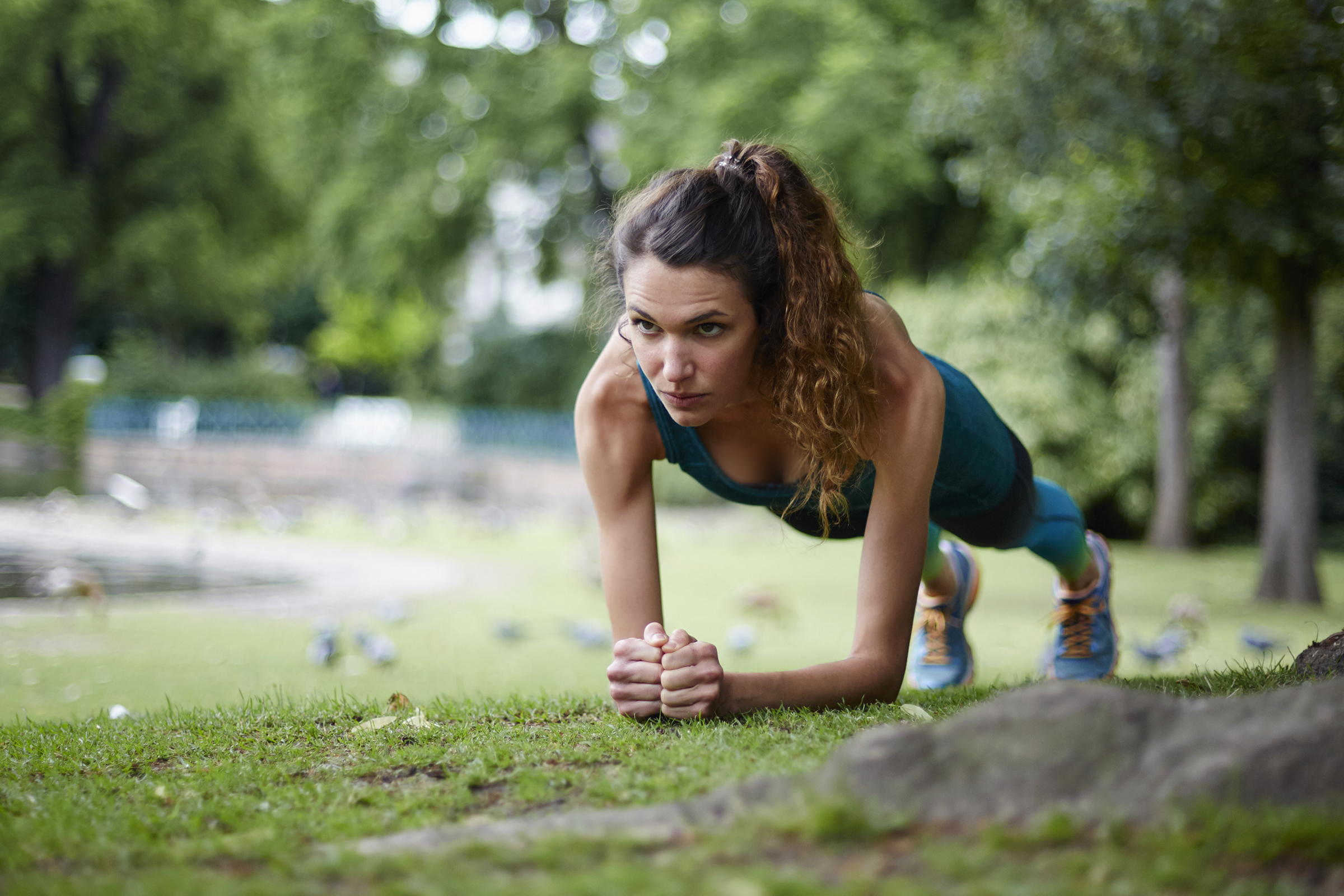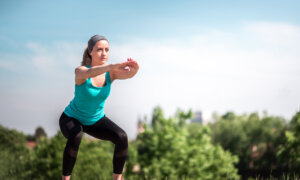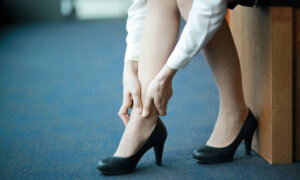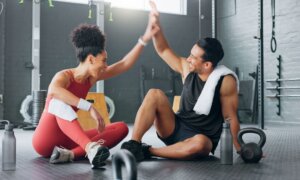Posture is one of the most challenging things to preserve as we age. This is because posture is complex and relies on the careful coordination of many muscles, bones, and joints.
Habitual patterns also have a powerful effect on your posture; good habits contribute to good posture, and bad habits, of course, can promote poor posture. Unfortunately, with the emergence of ever more technology into our lives, poor posture is becoming vastly more common.
One of the problems I’ve witnessed with poor posture is that it can feel normal to those affected. Our posture can degrade slowly and subtly over time without much perception of change. Once symptoms develop, the changes are often advanced and can be challenging to correct. Over the years, I’ve had many patients who have required surgery to try to correct issues related to their posture.
Establishing good postural habits can prevent the development and progression of postural problems. Beyond these habits, the largest contributor to poor posture is muscular weakness. Correct posture hinges heavily on your body’s core muscles. A strong core can help preserve your posture, while a weak one can allow it to fall into misalignment.
The following exercises are fantastic for strengthening your core muscles and helping to improve your posture.
7 Easy Exercises to Improve Your Posture
1. Seated Chest Stretch/Chest Opener
The chest stretch is an excellent exercise for both stretching the chest muscles and extending the spine. It’s also a great exercise for strengthening posterior back muscles. This exercise can help combat the effects of prolonged sitting and the potential progression into
upper-crossed syndrome.

(Chung I Ho/The Epoch Times)
Step 1: Sit in a chair with enough room to allow your arms to move behind you.
Step 2: Reach your arms behind your back and clasp your hands together, keeping them close to your back. Sit up as tall as possible.
Step 3: Reach straight back with your arms while simultaneously pushing your chest out. Push back as far as you can with your hands and hold for three seconds. Be sure to remain as upright as possible during this movement.
Step 4: Bring your hands back close to your lower back and repeat the movement. Each time you reach your arms back and push your chest out counts as one repetition.
Step 5: Try to perform 12 repetitions per set and three sets, making adjustments as needed.
2. Plank
The plank is considered a classic core-strengthening exercise.

(Chung I Ho/The Epoch Times)
Step 1: Lie flat on the floor on your stomach with your feet approximately a foot apart and your elbows bent. Rise onto your elbows, keeping your upper arms straight up and down and your palms flat on the floor. Be sure to keep your body in a straight line without sagging or arching your back. Keep your head up and facing out.
Step 2: Hold this position for as long as you can, up to one minute. This counts as one repetition.
Step 3: Try to do three repetitions with one minute of rest between each.
Planks are quite challenging, especially at first. Keep at it and you will steadily improve.
3. Side Plank
The side plank exercise has many of the benefits of the standard plank but focuses on the core muscles in your sides and glutes. These can be challenging at first, but steadfast practice will help you quickly become stronger.

(Chung I Ho/The Epoch Times)
Step 1: Lie on the floor on your side with your upper body elevated and your elbow resting on the floor. Your upper leg should be resting on your lower leg, and your bottom hip should be resting on the floor.
Step 2: Lift your hips off the floor, bringing your body into a straight line.
Step 3: Hold this pose for one minute, then lower your hips back down. This counts as one repetition. Try to perform three repetitions.
Together, these two plank exercises can work wonders to strengthen your core and improve your posture and balance.
4. Front Fold/Floor Touches
This standing exercise focuses on your back muscles—particularly in your lower back. It’s easy and safe and can be adjusted to your fitness level.

(Chung I Ho/The Epoch Times)
Step 1: Stand with your feet shoulder-width apart.
Step 2: Keep your back straight, then bend at the hips and reach down as far as you can toward the floor. Touch the floor if you can; otherwise, try a modified version using a box or step.
Take approximately two seconds to move into position. Bending your knees slightly is acceptable but too much can sacrifice the benefits to your back muscles.
Step 3: Return to the starting position. Be sure to keep your back straight the entire time, and take two seconds to stand. This counts as one repetition.
Step 4: Try to do three sets of 12 repetitions, making modifications as needed.
To upgrade this activity, you can hold weights in each hand or hold a single weight with both hands to increase resistance.
5. Good Morning Exercises
This classic exercise is a great one to start your day. It provides a good physical workout, is highly controllable, and gets many of your postural muscles ready for an active day.

(Chung I Ho/The Epoch Times)
Step 1: Stand tall with your legs shoulder-width apart. With your fingers interlaced, place both hands on the back of your head.
Step 2: With your knees slightly bent, bend your hips until you’re in a deep bow with your face toward the floor. Be sure to keep your back straight and your elbows extended straight out. Take a full second to move into the bow.
Step 3: Hold the position for one second before rising back up.
Step 4: Each full movement is counted as one repetition. Try to perform 15 repetitions per set and three sets.
While this exercise may not seem as challenging as the others, don’t be fooled. It works important muscles and can even increase your cardiovascular strength.
6. T-Spine Rotation
This exercise involves considerable spinal rotation, which can help maximize your flexibility and actively engage your core muscles.

(Chung I Ho/The Epoch Times)
Step 1: Stand with your feet at least shoulder-width apart with arms extended outward from your sides. Bend at your hips while keeping your back straight.
Step 2: Keep one hand down, then swing your other arm out to your side and up toward the ceiling in an arc while keeping your elbow straight and rotating your body. Follow your hand with your head as it swings through the arc.
Be sure to keep your other hand pointing straight down between your knees and visualize trying to touch the floor and ceiling at the same time.
Step 3: Repeat on the other side. This counts as one repetition.
Step 4: Try to perform three sets of 15 exercises and modify them as needed.
T-spine rotations may feel “tight” when you first begin exercising, but they become easier as you warm up.
7. Bear Crawl
The bear crawl is an aggressive core-building exercise that combines arm and leg movement. It requires plenty of floor space and can be an excellent outdoor exercise.

(Chung I Ho/The Epoch Times)
Step 1: Start on your hands and knees in a pushup position. Your arms should be straight with the balls of your feet on the floor.
Step 2: Simply walk across the floor on your hands and feet without touching your knees to the floor. Go slowly, taking up to two seconds for each step.
Step 3: This counts as one repetition. Try to perform 30 steps per set and three sets.
Feel free to experiment with sets, repetitions, walking patterns, and performance speed, knowing that you’ll get better the more you exercise.
These exercises can collectively help you maintain a strong core and better posture. Combining them with healthy postural habits can preserve your posture as you age and prevent future problems.
*If you have health or mobility issues that may present problems, consult your physician before commencing exercise activity.




















